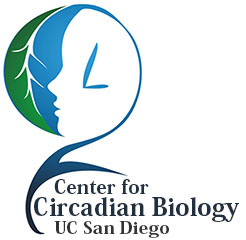Medical Implications
The clinical and medical relevance of chronobiology and circadian systems continues to grow in importance in shaping medical treatment, guiding research, providing new targets for drug development, and yielding insight into the inter-relatedness of various disease processes and circadian rhythms.
Sleep disorders and other changes have long been associated with a wide variety of medical problems. Part of the revolution in medical research brought about by advances in chronobiology, however, is the recognition that the function and dysfunction of cell-based clocks play an integral and causative role in the progression of a wide variety of diseases. For example, sleep disorders and shortened sleep duration are well correlated with increased risk of weight gain, obesity and metabolic diseases such as diabetes mellitus. Similarly, shift-work with its forced asynchrony between sleep-wake cycles and lagging circadian rhythms is strongly associated with increased cardiovascular morbidity and mortality. At the cellular level, ongoing research on cardiomyocyte circadian clock function is elucidating its significant influence on heart function and the progression of heart disease. Similarly, the multiplicity of peripheral clocks (i.e., outside the central clock of the supra-chiasmatic nucleus in the hypothalamus) in the human organism have been found to comprise networks which both control circadian processes and are tightly connected to metabolic control networks such that disturbance of one disturbs the other. Hence, not only can metabolic disease disturb sleep cycles, but disruptions in circadian rhythms can promote metabolic diseases.
Increasingly over the years, oncologists have come to realize that the effectiveness and severity of side effects of chemotherapies can vary dramatically based upon the time of day of their administration. Given the pronounced circadian rhythms in the cell cycle and the fact that many anti-cancer agents are tailored to attack particular aspects of the cell division machinery, perhaps it should not be surprising that time of administration matters so much. Recent findings now shed some light on a possible mechanism for the greater success of cisplatin treatments in the early morning. All cells, including cancer cells, undergo daily cycles in the effectiveness of their ability to repair DNA damage; an early morning ebb in the functioning of DNA excision repair provides a window when cancer cells are least able to counteract the damage done by cisplatin. As a consequence of research regarding the importance of time of administration for safety, tolerability, and effectiveness of some drug therapies, time of administration may increasingly become a factor to be controlled in the clinical evaluation of experimental cancer drugs.
The ubiquity of clock genes and clock functions throughout the organs of the body suggest that circumstances affecting circadian rhythms, whether shift-work, jet-lag, or drugs that influence sleep and wakefulness, can have effects on the proper functioning of many other bodily functions. For example, current research suggests a role for circadian rhythms in the underlying mechanisms of some liver diseases, gastro-intestinal disorders, and susceptibility to alcoholism-driven liver damage. Additionally, disruptions in circadian cycles and attendant sleep disorders are increasingly understood to exacerbate certain mental illnesses.
Genes that control circadian functions are increasingly being correlated with various mental illnesses, with a particular emphasis on depression. Indeed, light therapy and temporary sleep deprivation have been shown to be therapeutically effective for some depressions, and pharmacologic modulators of the circadian regulator melatonin are under investigation as potential anti-depressants.
Of course, the investigation and treatment of sleep disorders themselves are now pursued at the molecular level through investigation of the effects of multiple gene-based clock systems. Advances in the understanding of the molecular basis for the control of the sleep-wake cycle continue to provide insight into opportunities for treating sleep disorders. For example, in the past decade investigations into the chronobiology of narcolepsy through comparative species studies have lead to the discovery that human narcolepsy is probably a neurodegenerative disease, related to diminished functioning of orexin neurons.
Future investigations will undoubtedly continue to inform clinical and medical understanding and practice. We at CCB look forward to contributing to groundbreaking research and to the shape of medicine to come.
